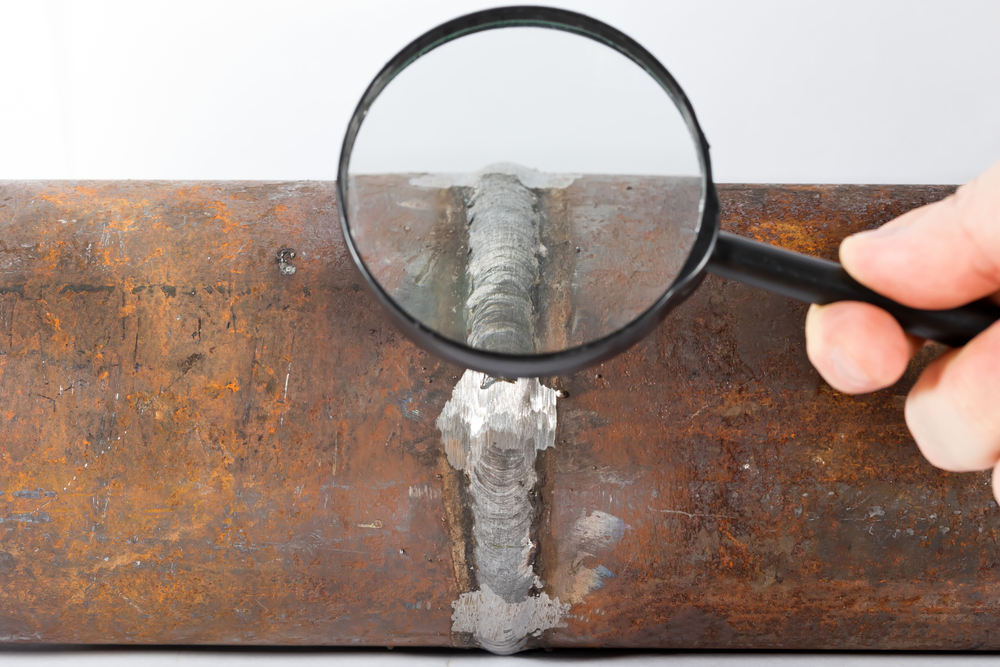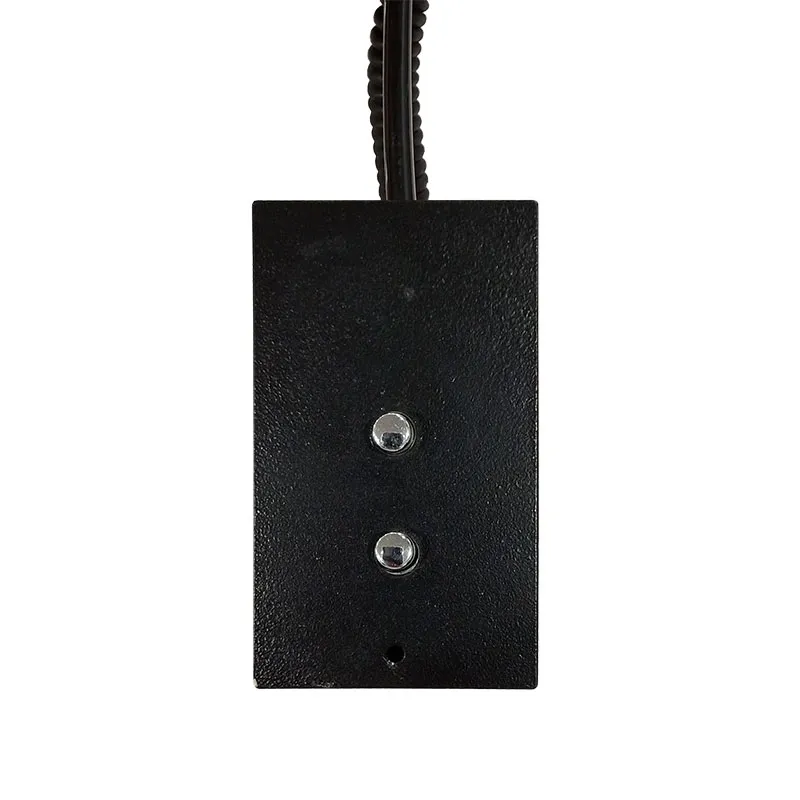Comprehensive Pipeline Welding Inspection: Protecting Infrastructure Integrity
Comprehensive Pipeline Welding Inspection: Protecting Infrastructure Integrity
Blog Article

Finest Practices for Pipeline Welding Examination: Methods, Standards, and Procedures to Attain Quality Control and Conformity
Effective pipeline welding examination is vital for making certain the integrity and security of essential facilities. By employing a combination of strategies such as aesthetic examination and advanced non-destructive screening methods, in addition to adherence to established market standards like those from ASME and AWS, companies can dramatically enhance their quality control processes. However, the application of these ideal techniques positions numerous difficulties that warrant mindful consideration. Comprehending the intricacies associated with each phase of evaluation is essential to attaining compliance and dependability in pipe systems. What specific techniques can be employed to browse these obstacles efficiently?
Importance of Welding Examination
The integrity of bonded joints is extremely important in making sure the safety and security and reliability of pipe systems. Proper welding techniques and comprehensive evaluation procedures are crucial to avoid failings that can cause devastating occurrences, environmental damage, and death. Pipeline Welding Inspection. Welding assessment acts as a preventive measure, determining issues such as splits, porosity, and incomplete fusion before they rise right into severe problems
Moreover, pipeline systems commonly operate under high stress and extreme problems, making the top quality of welds much more essential. Governing compliance is an additional significant aspect, as various criteria determine the quality control procedures that should be stuck to in pipe building and construction and upkeep. Failing to conform can result in financial losses and legal ramifications.

The role of welding assessment extends beyond plain verification of craftsmanship; it incorporates the guarantee of long-lasting operational honesty. This involves a systematic approach that consists of not just visual evaluations yet also advanced non-destructive screening approaches. Ultimately, effective welding examination is a financial investment in the long life and safety of pipeline systems, guaranteeing they work as planned while reducing threats connected with product shortages.
Key Examination Strategies

Visual inspection, usually the first line of defense, permits the identification of surface area defects such as fractures, damages, and porosity. Ultrasonic testing utilizes high-frequency sound waves to spot internal imperfections, providing an extensive analysis of weld honesty. This non-destructive approach is particularly efficient for determining gaps that may not show up externally.
Radiographic testing includes making use of X-rays or gamma rays to generate photos of the bonded joint, disclosing inner problems. This technique supplies thorough understandings however might require specialized equipment and safety and security factors to consider. Finally, magnetic particle testing works for spotting surface and near-surface discontinuities in ferromagnetic products, making use of electromagnetic fields and fine iron bits.
Market Standards and Regulations
Compliance with industry standards and policies is essential for ensuring the high quality and safety and security of pipe welding examinations. These requirements give a framework for best methods in welding procedures, products, and inspection methods, allowing organizations to decrease flaws and boost the honesty of pipe systems. Key bodies such as the American Society of Mechanical Designers (ASME), the American Welding Society (AWS), and the International Company for Standardization (ISO) state guidelines that are extensively identified and taken on within the market.
In the United States, laws from the Pipeline and Hazardous Products Security Administration (PHMSA) control the security of pipeline procedures, mandating strenuous assessment protocols. These criteria not only offer to safeguard public security and the setting yet likewise ensure conformity with contractual and legal responsibilities. Adherence to the appropriate codes, such as ASME B31.3 for procedure piping, is necessary for maintaining functional efficiency and regulative compliance.
Moreover, continual updates and modifications to these criteria reflect technical advancements and evolving market techniques, emphasizing the demand for companies to stay educated and train employees accordingly. Inevitably, robust conformity with well-known standards promotes trust fund and reliability in pipeline facilities, protecting both properties and stakeholders.
Effective Evaluation Treatments
Reliable examination procedures are critical for identifying potential problems in pipe welds and making certain the overall honesty of the system. A systematic technique to assessment encompasses several crucial stages, consisting of pre-weld, in-process, and post-weld inspections. like this Each phase plays a crucial role in maintaining quality control.
During pre-weld evaluation, it is vital to examine the products and joint setups, guaranteeing compliance with project specifications. In-process inspections involve keeping an eye on welding methods and specifications, such as heat input and take a trip rate, to stop flaws from happening. This phase enables real-time modifications to welding techniques.
Post-weld evaluations include non-destructive screening (NDT) strategies like radiography, ultrasonic screening, and magnetic bit testing. These techniques help spot internal and surface area problems that might compromise the pipe's performance. Paperwork of all assessment activities is paramount, giving a deducible record that sustains compliance with industry criteria.
Educating and accreditation of evaluation employees additionally enhance the performance of these procedures. By adhering to an organized evaluation method, organizations can mitigate dangers, make sure conformity, and eventually deliver pipes that meet rigorous security and efficiency demands.
Usual Difficulties and Solutions
Pipe welding assessment presents a number of common difficulties that can influence the quality and security of the end product. One significant difficulty is the variability in welding strategies news and materials, which can bring about inconsistent weld top quality. To resolve this, it is important to develop standardized treatments and training for welders, making sure a consistent technique throughout projects.

Ecological elements, including temperature level and humidity, can additionally impact the welding process, possibly resulting in splits or insufficient blend. Carrying out controlled settings and adhering to pre-weld treatments can reduce these threats.
Final Thought
To conclude, the execution of finest methods for pipeline welding examination is necessary for guaranteeing top quality assurance and conformity with industry standards. A detailed method, including different methods such as visual, ultrasonic, and radiographic screening, promotes the identification of defects throughout all phases of the welding process. Pipeline Welding Inspection. Adherence to developed regulations and effective examination procedures not just boosts the reliability and security of pipe systems but likewise minimizes threats related to welding flaws, thereby promoting general functional honesty
Compliance with market requirements and policies is essential for guaranteeing the high quality and safety and security see this here of pipeline welding inspections. These requirements supply a structure for ideal methods in welding procedures, products, and inspection strategies, permitting companies to minimize problems and improve the integrity of pipe systems.In the United States, laws from the Pipe and Hazardous Products Safety And Security Administration (PHMSA) govern the safety of pipeline operations, mandating strenuous inspection protocols. A systematic method to evaluation includes several essential phases, including pre-weld, in-process, and post-weld examinations.In verdict, the execution of ideal techniques for pipe welding evaluation is necessary for making sure high quality assurance and conformity with market requirements.
Report this page